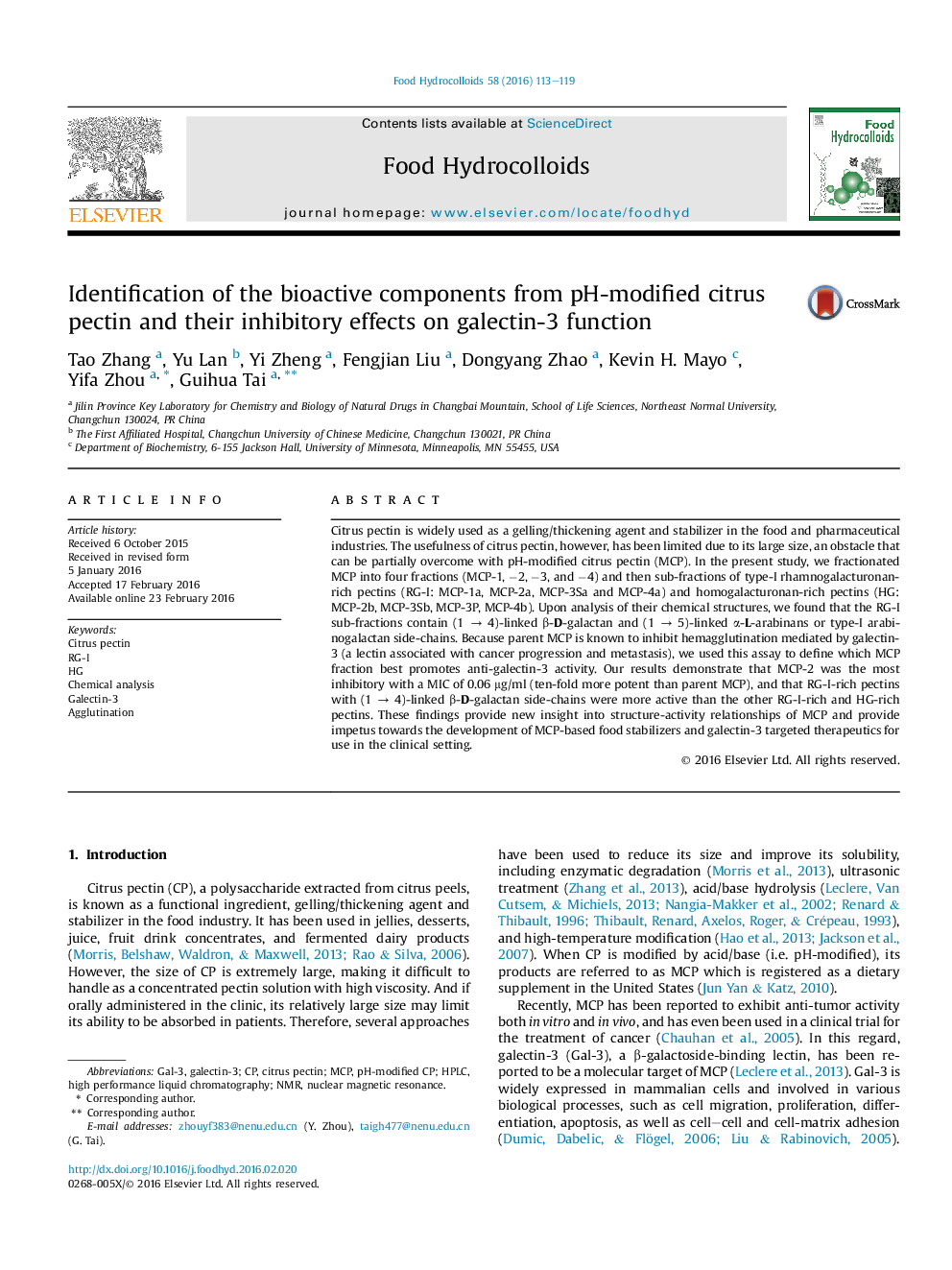| کد مقاله | کد نشریه | سال انتشار | مقاله انگلیسی | نسخه تمام متن |
|---|---|---|---|---|
| 603701 | 1454419 | 2016 | 7 صفحه PDF | دانلود رایگان |

• The bioactive components of MCP were totally fractionated using several approaches.
• Eight homogenous MCP components were purified and chemically analyzed.
• These components demonstrated varying degrees of anti-galectin-3 activity.
• One of them was ten-fold more potent than parent MCP.
Citrus pectin is widely used as a gelling/thickening agent and stabilizer in the food and pharmaceutical industries. The usefulness of citrus pectin, however, has been limited due to its large size, an obstacle that can be partially overcome with pH-modified citrus pectin (MCP). In the present study, we fractionated MCP into four fractions (MCP-1, −2, −3, and −4) and then sub-fractions of type-I rhamnogalacturonan-rich pectins (RG-I: MCP-1a, MCP-2a, MCP-3Sa and MCP-4a) and homogalacturonan-rich pectins (HG: MCP-2b, MCP-3Sb, MCP-3P, MCP-4b). Upon analysis of their chemical structures, we found that the RG-I sub-fractions contain (1 → 4)-linked β-D-galactan and (1 → 5)-linked α-L-arabinans or type-I arabinogalactan side-chains. Because parent MCP is known to inhibit hemagglutination mediated by galectin-3 (a lectin associated with cancer progression and metastasis), we used this assay to define which MCP fraction best promotes anti-galectin-3 activity. Our results demonstrate that MCP-2 was the most inhibitory with a MIC of 0.06 μg/ml (ten-fold more potent than parent MCP), and that RG-I-rich pectins with (1 → 4)-linked β-D-galactan side-chains were more active than the other RG-I-rich and HG-rich pectins. These findings provide new insight into structure-activity relationships of MCP and provide impetus towards the development of MCP-based food stabilizers and galectin-3 targeted therapeutics for use in the clinical setting.
Figure optionsDownload as PowerPoint slide
Journal: Food Hydrocolloids - Volume 58, July 2016, Pages 113–119